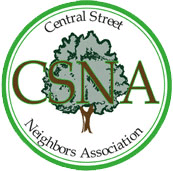Serious danger for single-family R-1 property owners lurks within the Envision Evanston 2045 proposed comprehensive plan and revised zoning ordinance. R-1 property owners must be aware of and understand the drastic effect on their R-1 properties that will result from the city’s planned zoning changes.
R-1 properties (which “provide for single-family development at the lowest density within the city,” according to the current zoning code) constitute large areas of single-family homeownership in the city. The proposed zoning changes will destabilize R-1 districts. They will alter the nature and character of R-1 property and the relationship of neighboring homes to one another, the neighborhood and the city.
City staff presented a preview of Envision Evanston 2045 at the Oct. 29 Sixth Ward forum. While reluctant to discuss specifics, staff members admitted the city’s plan is to entirely abolish R-1 single-family zoning. The plan is to allow multi-family structures containing up to four dwelling units to be built on what is now an R-1 single-family zoning lot.
Staff referred to a study projecting that 8,000 potential new residents will seek to reside in Evanston by 2045. Ignoring the fact that the city is already fully built out, has had a stable population for at least the past 60 years and has no land available for residential development, the plan is to increase density by “upzoning” all R-1 properties. Upzoning means altering a zoning code to allow new capacity for development. This would provide “new” raw land for multi-family development, where none exists, apparently to accommodate a potential population surge. The residents at the Sixth Ward forum were told that this is going to happen and is the way it is going to be.
Abolition of R-1 zoning was not requested by R-1 homeowners, is unwelcome and amounts to a government intrusion into residents’ control over their private property and their right to peaceful and stable enjoyment of it. City staff “assured” residents that this would happen “over time” and not “right away,” as if that makes it more palatable. Such an assurance is cold comfort to those R-1 property owners who have no wish to spend even one minute next to a four-plex development rising five feet away from a common lot line, whether it is now or 10 years from now.
A number of residents’ questions regarding this upzoning scheme were not addressed by staff at the forum. These include:
- What are the demographic facts underlying the projected 8,000-person population growth?
- Why is the city planning for future density by manipulating R-1 zoning to permit multi-family housing?
- The drastic and negative environmental consequences of increased density by eliminating or reducing open/green space now provided in R-1 by front and back yards, reducing permeable soil and stormwater absorption and increasing carbon footprint and emissions by replacing one single-family dwelling with four dwelling units.
- Disruption to R-1 property owners who have owned and maintained their properties over the years relying on stable zoning rules.
- Exacerbating already over capacity street parking in residential areas and the city’s continual waivers or reductions for off-street parking requirements for multi-unit developments.
- Increased pressure on city services, fire, police, etc., as well as increased demands on utilities (sewer, water, gas, electricity, telephone, cable, etc.)
- The negative effect of upzoning on R-1 property values in relation to the system of assessed property valuation and real estate taxation.
- The fallacy of transit-oriented developments (and the diminishment of required off-street parking) when fewer and fewer people work in places served by transit routes, and need to use a car to get to work.
Staff also indicated that reduced lot size requirements below the current R-1 minimums, increased structure height over that currently allowed in R-1 and reduced setbacks are also under consideration. None of these changes have a positive effect on neighboring existing R-1 properties and will negatively affect the nature and character of the neighborhoods in every R-1 district. Zoning changes such as those proposed can form the basis for a type of legal action known as inverse condemnation, allowing property owners to seek compensation when a government action damages or decreases the value of their property.
Why is this being done on the backs of R-1 residents at the expense of their quality of life and property value? Staff said that the city is pushing to get this R-1 upzoning done quickly. This would be well before the municipal elections in April 2025. What’s the rush? This is a 20-year plan, after all. Each candidate on the ballot in the April 2025 election must face voters and answer these questions. R-1 residents have the right to know if this upzoning proposal aligns with each candidate’s vision of development over the entire city and in each impacted ward. These zoning changes must not be considered until after the municipal elections, if at all, to permit residents to vet their elected officials and the taxpayer-funded consultants who devised this ill-advised scheme.
